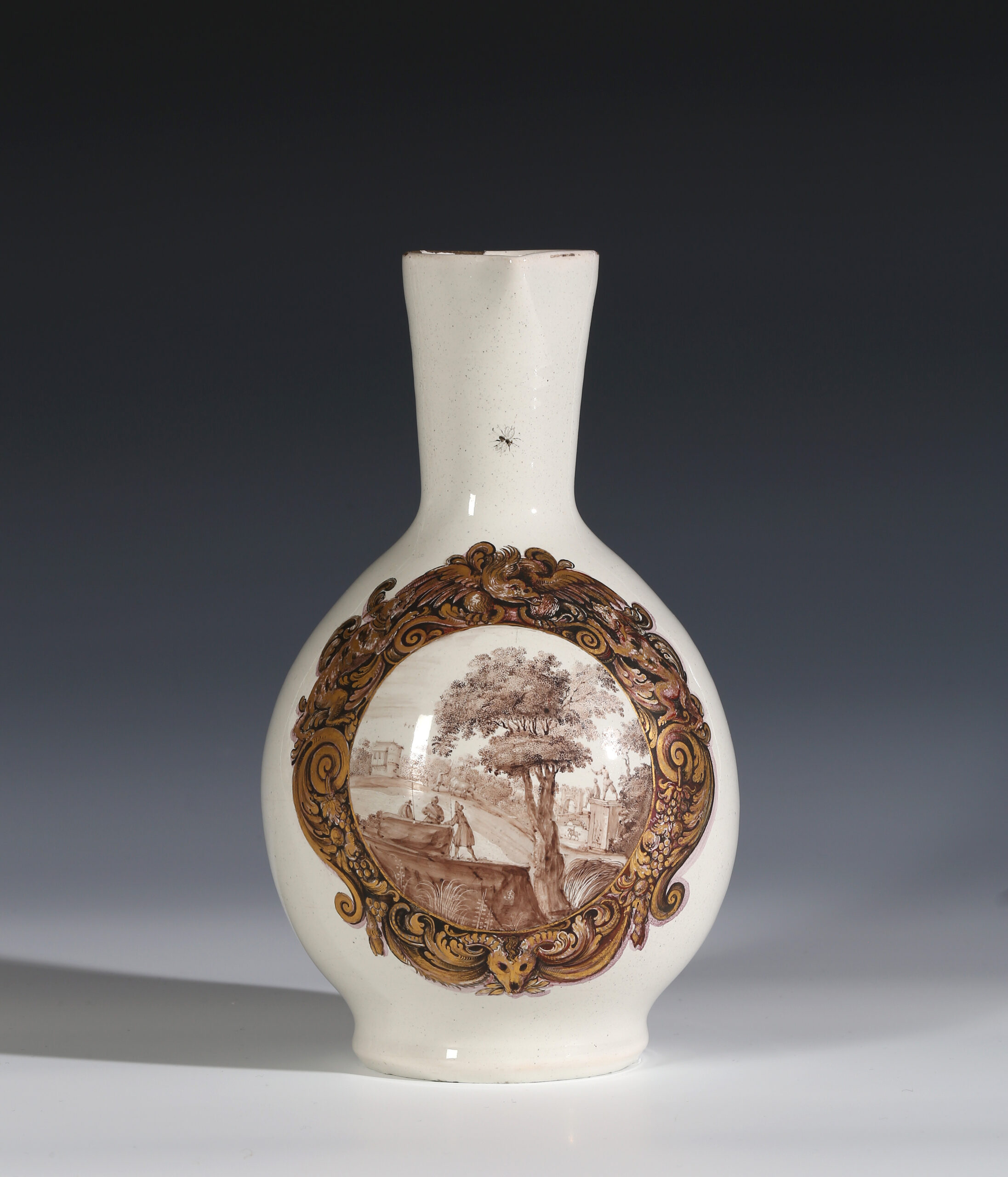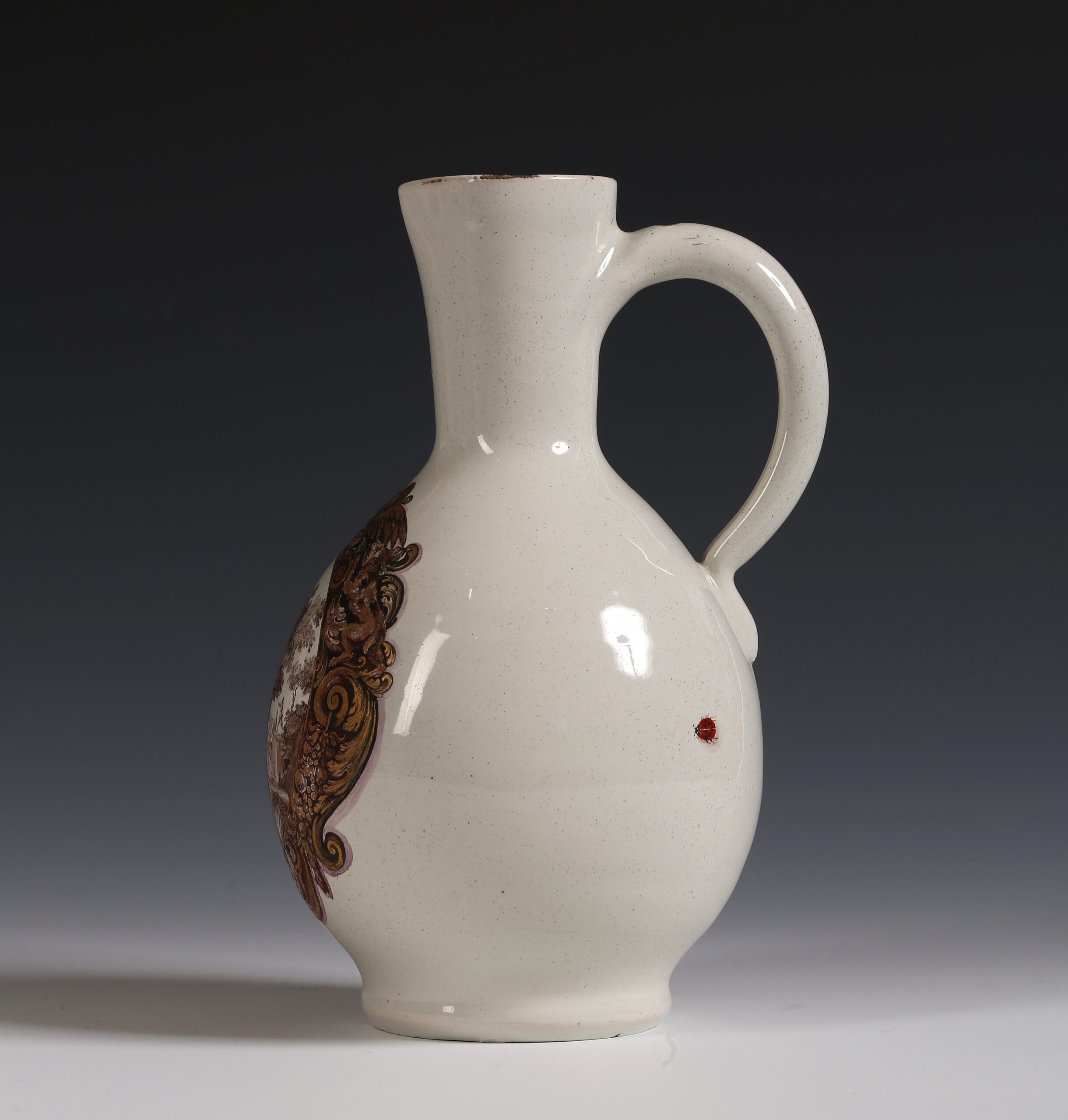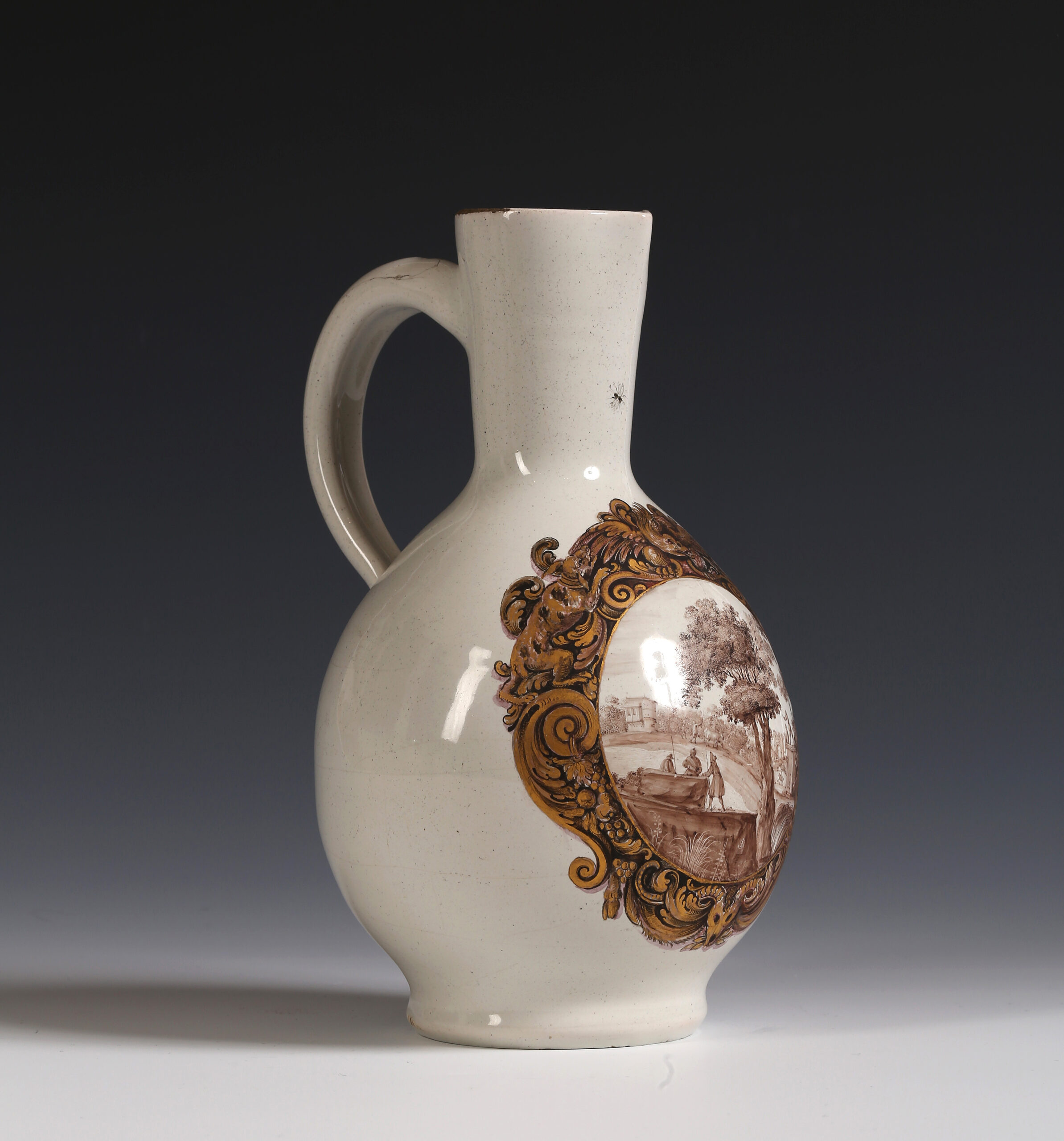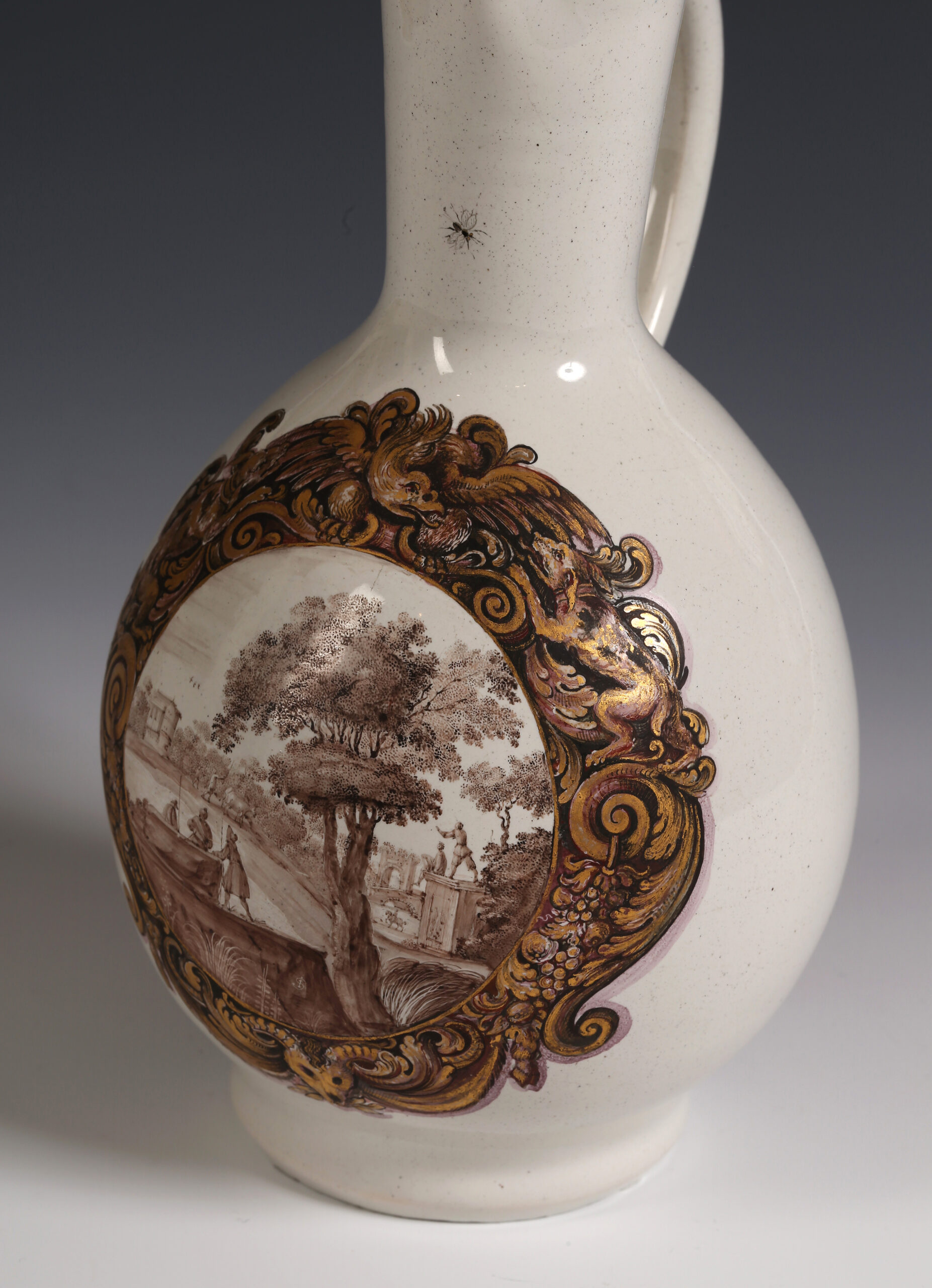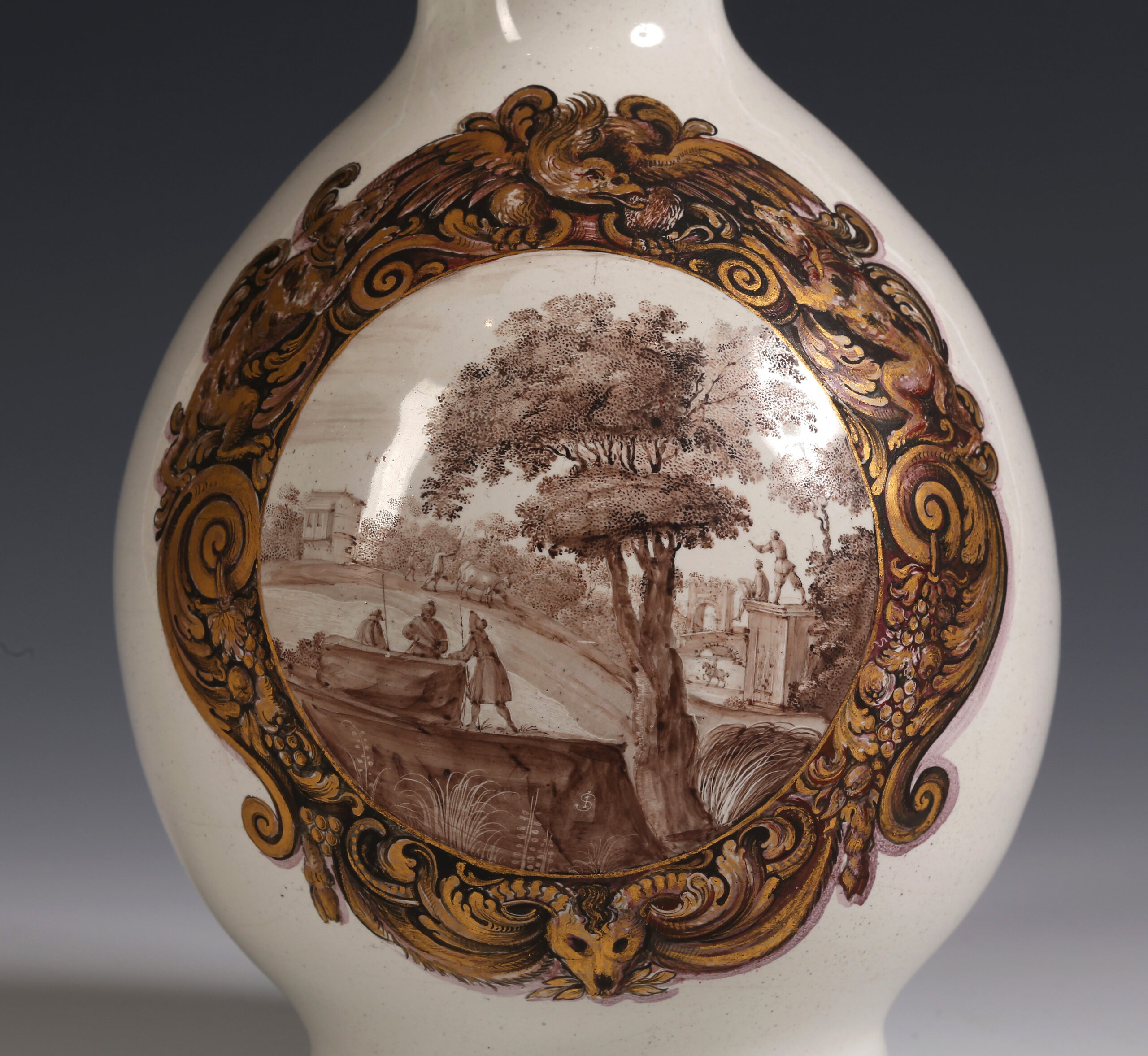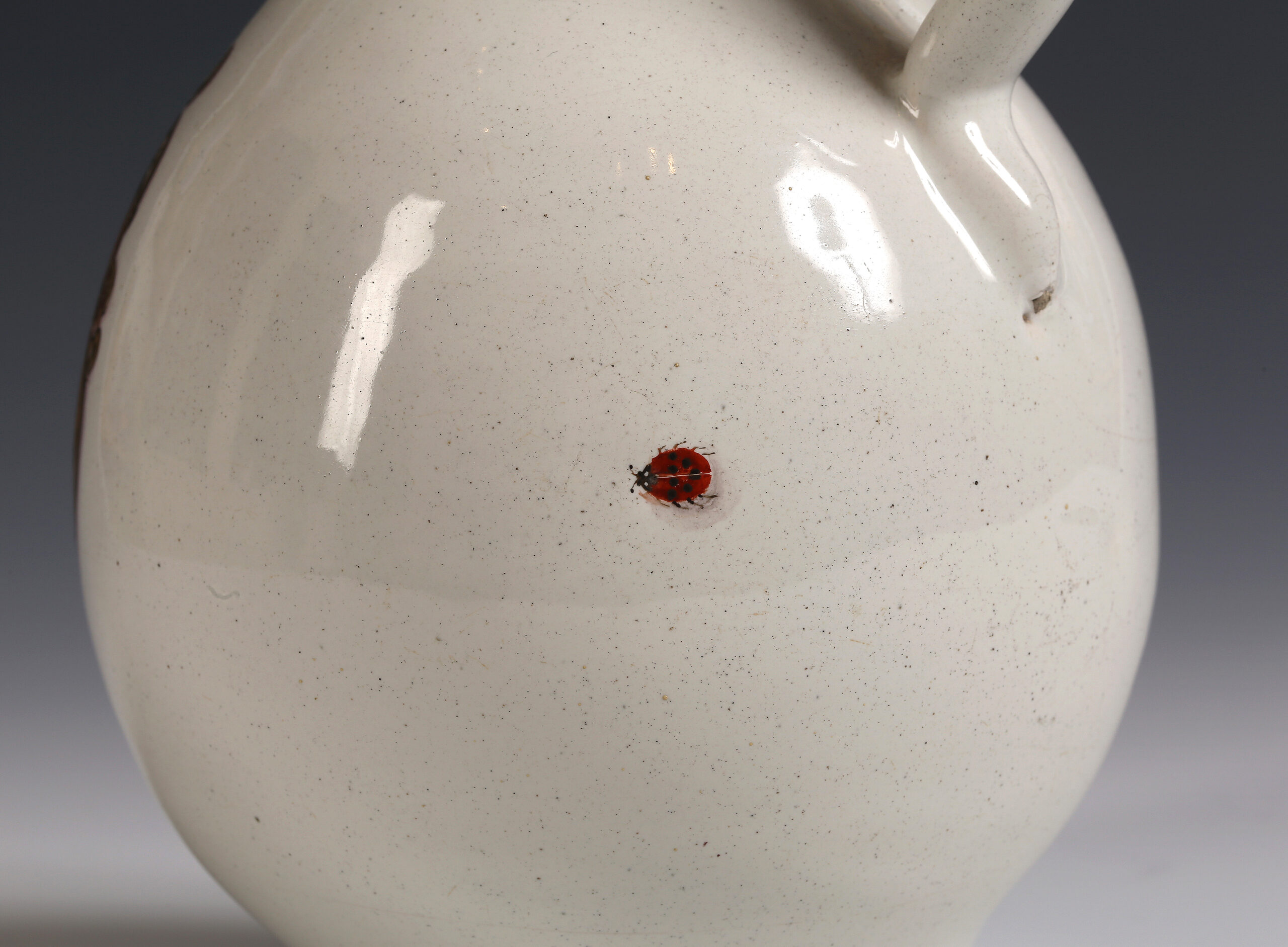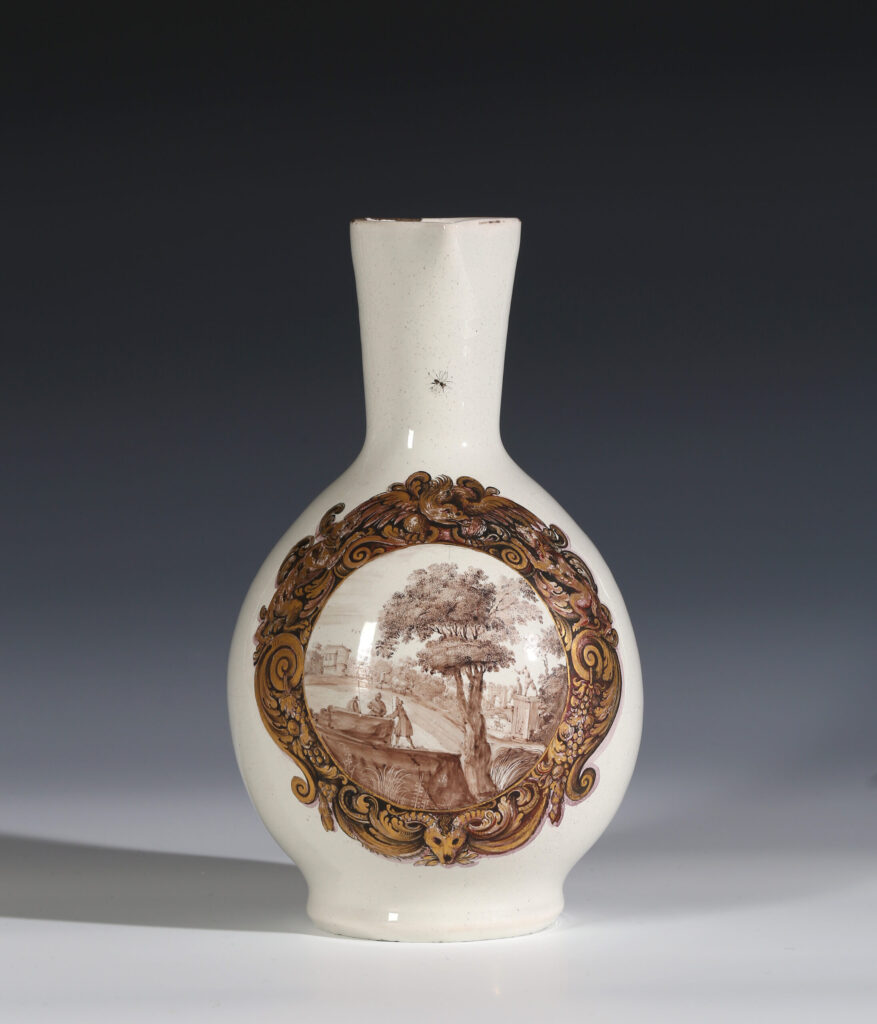
In around 1660, Johann Schaper (1631-1679) was the first artist to transfer the art of schwarzlot decoration from flat glass (Tafelglas) to form glass (Hohlglas). While he was predominantly a glass decorator, this may have had more to do with access to materials than preference. There was no faience production in Nuremberg at this time, whereas there was a strong glass industry. Schaper procured most of his white faience from the Delft potters of the Netherlands. He and other early Nuremberg hausmaler also used faience from Hanau and Frankfurt.
The main scene of this jug is a sepia landscape with figures taken from an engraving by Gabriel Perelle, framed by a particularly ornate cartouche. Two firing imperfections on the body are disguised with bugs.
The same scene is also the source for another signed piece dated 1663. [1] This shows a similarly mature painting style despite being produced only three years after Schaper’s earliest dated piece on either form glass or faience. By this point he would have already been 29 years old.

Bosch also notes, that over the course of the ten years that Schaper produced his works on faience or form glass there is hardly any recognisable change in his style. Although he did choose other motifs for his decoration, imaginary arcadian landscapes such as this were predominant by far. Occasionally he would use famous buildings as a focal point for his landscapes, but he was not interested in placing them in their actual context. As we find here, he would often include characters from everyday life. While he always based his landscapes and scenes on graphic sources, he produced his own interpretation of these scenes. This is notably different from many of the other hausmaler who would copy engravings exactly. [2]
A distinguishing feature of this piece is the border. Schaper experimented with a number of different borders throughout the course of his work, but this one is quite different from others and one of the most ornate.

This piece is illustrated along with twenty other signed pieces by Johann Schaper in Helmut Bosch (1984).
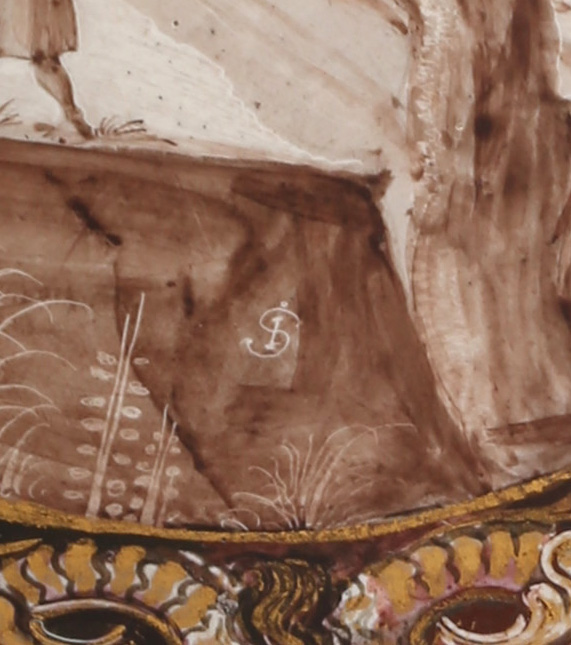
The incised IS Monogram of Johann Schaper
Condition:
Glaze losses to rim, glaze crack at top of handle
Provenance:
Robert G. Vater Collection
Anonymous sale; Sotheby’s, London, 25 March 1969, lot 19
Literature:
Philip Wilson, Art At Auction: The Year at Sotheby’s & Parke-Bernet 1968-1969, (London, 1969), p. 382
Helmet Bosch, Die Nürnberger Hausmaler, (Munich, 1984), p. 32, no. 6
‘E & H Manners, ‘Decorators on Ceramics and Glass’, 2024, no. 3
References:
[1] Helmet Bosch, Die Nürnberger Hausmaler, (Munich, 1984), p. 37.
[2] For a more in-depth discussion on the life and work of Schaper see Helmet Bosch, Die Nürnberger Hausmaler, (Munich, 1984), pp. 15-21.
Price: £40,000.00


